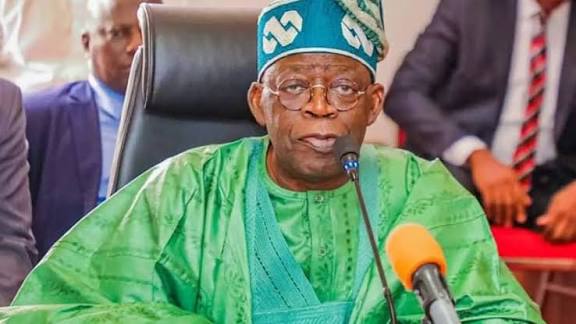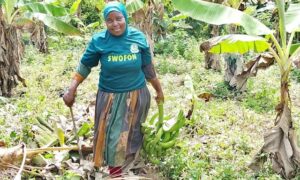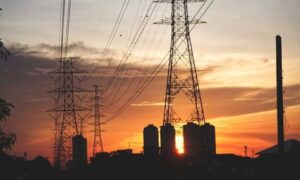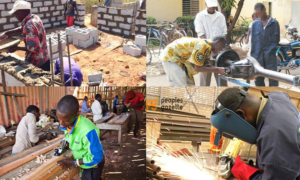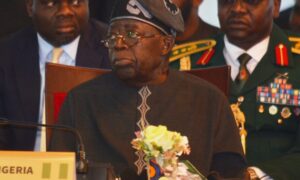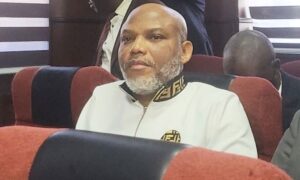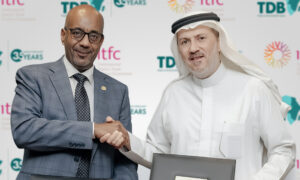BY OLABODE OPESEITAN
In a world where perception often trumps real rules of investment diplomacy. The country is no longer pleading for capital—it is curating it.
The influx of funds across oil, gas, mining, textiles, and infrastructure is not just a win for Nigeria’s economy; it is a crushing defeat for those who have spent years demarketing the nation, both at home and abroad.
The Qatar Signal and the $55 Billion Rail Proof
The $300 billion investment pledge from Qatari stakeholders signals a new era. But perhaps even more telling is the $55 billion in verified proof of funds submitted for Nigeria’s $60 billion high-speed rail project—a 4,000-kilometer transformative infrastructure plan. These are verified commitments, not speculative pledges, structured through the Asian Development Investment Bank.
The Tinubu government’s insistence on Proof of Funds (PoF) has become a litmus test for credibility. It filters out speculative actors— often called capital aggregators—who lack liquidity but seek to leverage government engagement to attract real financiers.
Global Best Practice: How Serious Nations Vet Investors
- Proof of Funds: Bank-issued confirmations or escrow-backed statements
- Due Diligence: KYI (Know Your Investor) protocols on track record and beneficial ownership
- Third-party Endorsements: From OEMs, sovereign wealth funds, or multilateral lenders
- Milestone-Based Commitments: Financial close, term sheets, and syndicated loan structures
By demanding these, Nigeria is aligning with the world’s most respected investment destinations.
Financial Close Achievements Since May 29, 2023
- $8 billion oil & gas investment surge: Shell, Eni, NNPC, TotalEnergies, Chevron
– Includes Shell’s $2 billion offshore gas FID, Bonga North Deepwater ($5B), and Ubeta Gas ($550M)—all at financial close
- Africa’s largest $2 billion textile/garment plant: Ogun State, with Arise IIP, AFC, Afreximbank, Equitane
– Slated to employ 120,000+, revive cotton farming, and anchor regional export leadership
- $1.3 billion lithium processing/mining investments: Kaduna, Nasarawa, Abuja
– Jiuling Lithium, Canmax Technologies, Avatar New Energy, ASBA Group
– Battery-grade lithium production mandated before export
- $1.7 billion Eurobond issuance (oversubscribed)
- $500 million AfDB infrastructure and SME support
- $3.4 billion IMF repayment, signaling fiscal discipline
- $1 billion+ commitments in solid minerals and manufacturing
- Major telecom & broadband expansions, including national fibre rollout
Strategic Deals Under Discussion
- Steel sector revival with global OEMs
- Renewable energy partnerships with UAE and European firms
- Digital economy expansion backed by World Bank and private equity
- Rail and aviation modernization with Asian and Middle Eastern investors
Progress with Perspective
Acknowledging and celebrating the breakthroughs Tinubu has achieved in attracting investors since May 2023 is not an invitation for complacency. There are still numerous challenges to tackle. The cost of living, for instance, remains high and must be brought down by all means possible. Appreciating the giant strides being made should serve as both a treat and a motivation—to do more for the country and its people.
Global Parallels: Rare but Real
- India (1991–1993): Under PM Narasimha Rao and FM Manmohan Singh, India liberalized its economy post-crisis. FDI surged, but it took 3–5 years to stabilize.
- Denmark (2012–2016): DONG Energy’s pivot under Henrik Poulsen transformed a debt-ridden oil firm into Ørsted, a global clean energy leader. The turnaround took 4 years, backed by strategic divestment and reinvestment.
By contrast, Nigeria’s turnaround under Tinubu—achieving multi-sectoral financial close, macroeconomic stabilization, and global investor confidence in just over two years— is exceptional by any global standard.
The Demarketers Defeated
Despite orchestrated campaigns to demarket Nigeria—ranging from exaggerated travel advisories, selective media framing, currency panic narratives, and investor scare tactics—the facts now speak louder than fear.


